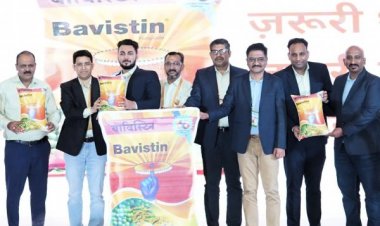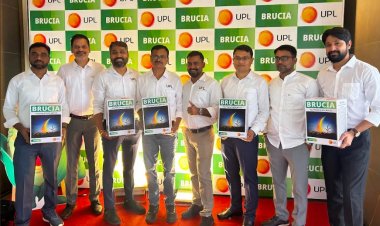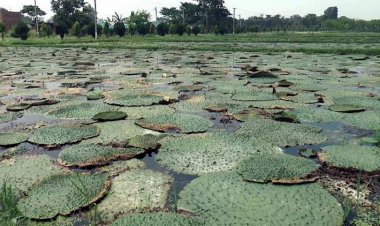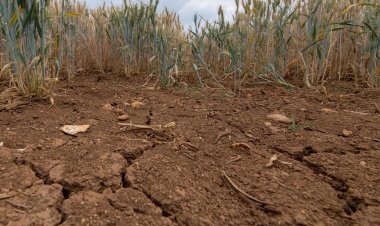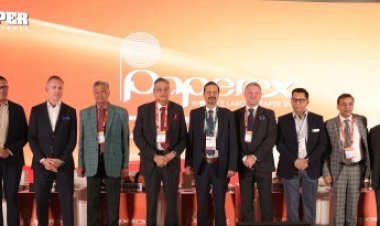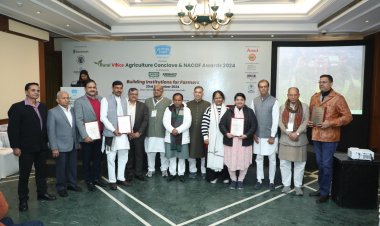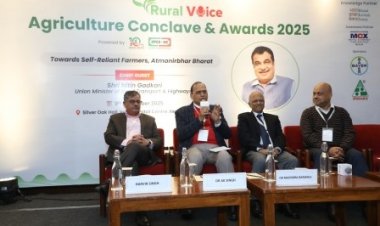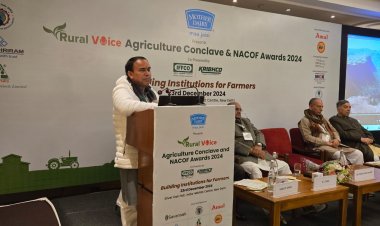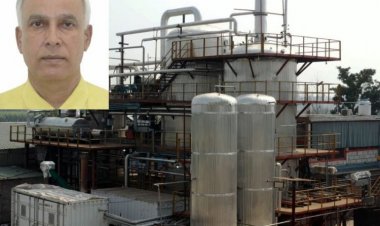Rural Voice Special: Open sea cage fish farming may increase fish production 50 times
Besides the sea, the cage system can also be used in rivers, large water bodies and ponds. Greater production is achieved in this system in comparison to ordinary fish farming. A cage costs about Rs 3 lakh. It can be used for 8-10 years.
The country produces about 1.4 crore tonnes of fish per annum at present. Going by the burgeoning demand for fish, its production requirement will go up to 1.8 crore tonnes by 2030. That is, fish production will have to be increased by 50 lakh tonnes. But the level of sea fishing is constant at about 35 lakh tonnes per annum. It is, therefore, necessary to increase fish farming in the sea. Open sea cage fish farming is emerging as an encouraging alternative. Dr Shubhadeep Ghosh, Principal Scientist, Visakhapatnam Regional Centre, Central Marine Fisheries Research Institute (CMFRI), spoke in the Rural Voice Agritech Show about open sea cage farming technology and its advantages. You may watch this episode of the show by clicking on the video link given above.
In open sea cage culture, there is a floating cage round, square or rectangular in shape. It is made up of a floating frame, nets and high-density polyethylene (HDPE). Dr Ghosh said two kinds of cage are used for fish farming in the sea. One is a cage that remains still in a place in the water while the other is one that floats in water. The cage is six metres long, four metres wide and four metres deep. About three metres of it remains submerged in water. The frame uses three nets. The first net is inside the cage and fish is farmed in it. The second net is fixed around the cage to protect the fishes from marine creatures. The third net is above the cage to protect them from birds.
Besides the sea, said Dr Ghosh, the cage system can also be used in rivers, large water bodies and ponds. Greater production is achieved in this system in comparison to ordinary fish farming. A cage costs about Rs 3 lakh. It can be used for 8-10 years.
According to Dr Ghosh, fishes that are high in demand and valuable are farmed, such as Indian Pompano, Silver Pompano, Cobia, Snapper and Sea bass. They sell in the market at up to Rs 350. Dr Ghosh said that the technique is being used for fish farming in coastal states from Gujarat to West Bengal. He said that 3,200 cages are being used at present for fish farming in the sea. About 10 lakh tonnes of fish is produced every year through this technique.
Dr Ghosh said that the Pradhan Mantri Matsya Sampada Yojana, which is being run by the government, emphasizes the open sea cage system. The government has provisions of 40-60 per cent subsidy to promote this technique.
Anil Kumar Karanam, a fish farmer from Visakhapatnam who uses the open sea cage farming technique, has been in fish farming for five years. He said that the production through this technique was 50 times more than that in traditional fish farming.
India has a coastline 8,118km long. 40 lakh people from 3,433 villages in the 66 coastal districts of the country are associated with the fish business. In order to keep them employed and fulfil the country’s requirements, fish farming in the sea through the open cage system is a good alternative. The growth of fish is fast and greater in this technique.



 Join the RuralVoice whatsapp group
Join the RuralVoice whatsapp group


















